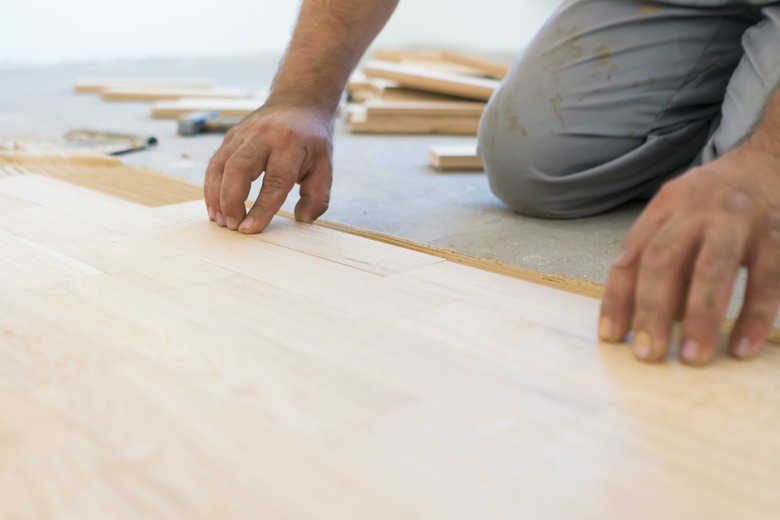Pros And Cons Of High Gloss Laminate Flooring
If you're in the market for gloss flooring ideas, you might consider laminate flooring. When it comes to choosing flooring material, many homeowners choose laminate flooring because of its durability and resemblance to real wood. High gloss laminate flooring is a particularly attractive option because of its high shine finish. However, this type of flooring is not without its drawbacks. Before you visit your nearest big-box home improvement store, consider both the pros and cons of high gloss laminate flooring to decide whether it is the right option for your home.
High Gloss Laminate Flooring Cost
High Gloss Laminate Flooring Cost
New flooring is often a pricey endeavor, which is another reason why high gloss laminate flooring is appealing to homeowners, particularly those on a tight budget. Compared to traditional high gloss hardwood flooring, high gloss laminate flooring is a much more budget-friendly option. Several companies make this type of flooring so homeowners can shop around to find the best deal. However, the best quality high gloss laminate flooring will typically always be cheaper than its hardwood counterpart, so homeowners get the look of a real wood high gloss finish without paying the steep price.
Easy to Install
Easy to Install
Sometimes the cost of labor to install new flooring is higher than the materials themselves. High gloss laminate flooring is appealing to many homeowners because of its easy installation. If you're the do-it-yourself type of homeowner, the ease of installing high gloss laminate flooring might tempt you to save even more money on the job by doing it yourself. Many types of high gloss laminate flooring fit together in a tongue and groove system, so they snap together like puzzle pieces. You usually do not have to add any adhesive because the glue is already applied to the pieces, and it is activated simply by adding water. As a result, high gloss laminate flooring can be installed much more quickly than a traditional hard wood floor.
Low Maintenance Requirements
Low Maintenance Requirements
How much maintenance your new flooring will require is another thing to consider when exploring gloss flooring ideas. In general, high gloss laminate flooring requires much less maintenance than high gloss hardwood flooring. Laminate flooring does not require regular waxing as hardwood does and can be cleaned with a regular broom, vacuum or mop. Because its top layer is veneer, high gloss laminate flooring does not stain easily. Hardwood, on the other hand, can absorb liquids and develop stains if not maintained.
Obvious Signs of Wear and Tear
Obvious Signs of Wear and Tear
With high gloss laminate flooring comes the potential for high gloss laminate scratches. Like any product with a high gloss finish, high gloss laminate flooring is unforgiving when it comes to showing signs of wear and tear. Scuff marks, scratches and other marks are much more obvious on this type of flooring because it reflects light which can emphasize marks on the surface. As a result, high gloss laminate flooring may not be the best option for areas that receive heavy foot traffic.
Higher Risk of Slip and Fall
Higher Risk of Slip and Fall
Safety should always be a priority when choosing the right flooring for your home. One of the biggest setbacks of high gloss laminate flooring is its tendency to be highly slippery. Due to its slick, smooth surface, high gloss laminate flooring can be very slippery, especially when wet. If you live with children or elderly relatives who are more vulnerable to injuries from a slip and fall, you might prefer a more matte or semi-matte finish for your laminate flooring instead.
Does Not Add to Resale Value
Does Not Add to Resale Value
While it looks and feels similar to real wood, high gloss laminate wood flooring contains very little portions of real wood. As a result, high gloss laminate flooring does not help increase the value of your home the way that real hardwood flooring might. If you are thinking about selling your home in the near future, you might want to consider adding high gloss hardwood flooring instead of laminate. It will cost you more up front, of course, but will also give you more bank for your buck when it comes time to cash in on the value of your home.
